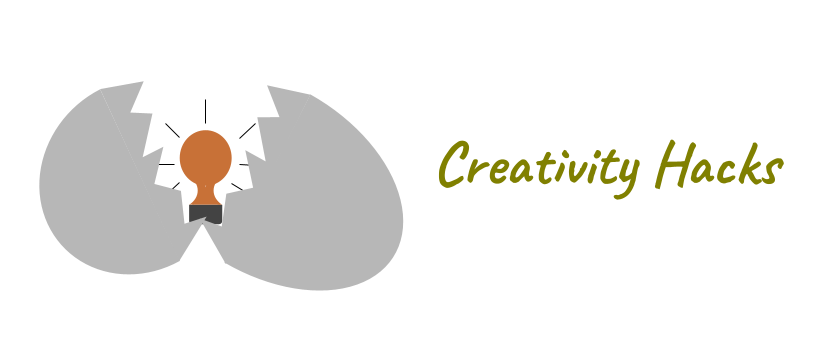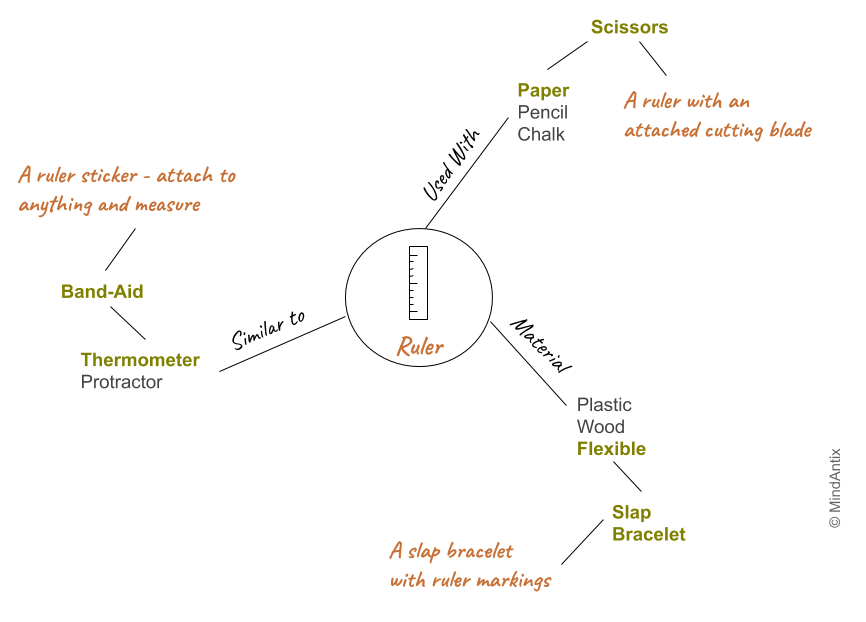Finding ways to connect two unrelated concepts liest at the root of many innovations. Combining unrelated objects or concepts is one hack to finding novel ideas. However, combining completely random ideas has one drawback – it often leads to incongruous ideas that don’t always resonate with people. The One-hop association method is a way to connect unrelated (but not completely random) concepts and leads to ideas that are perceived as surprising in a good way.
About The Hack
For this hack, you start by building an association map of an object. Suppose your task is to make a new and interesting ruler. You first start with the ruler in the center and choose a few ways that a ruler might be connected to other objects. Attributes like “used with”, “material” and “similar to” tend to be easier to work with for younger children. Then, you list different values for each of those attributes like a ruler is used with paper and pen. This gives the first order of concepts that are directly associated with the ruler. Next you extend the association map by one more level and list second order concepts that are associated with the first order ones. Finally, you try to connect back the second order concepts with the original object and see if that leads you to any interesting ideas.
As an example, a ruler is used with paper which is used with scissors. Trying to connect a ruler with scissors might give you an idea to make a ruler with a sharpened edge that can also help cut paper. The reason this hack works well is due to the incongruity theory. When people notice an incongruity, they can either find it amusing or be disappointed. When people can tie the incongruity back to the product, the product feels more fun, interesting or amusing, but when people can’t find an underlying connection, the idea appears confusing.
Summary
Finally, here is a quick summary of the creativity hack and how to use it in product design or with students.
| Description | To find a creative idea for product improvement, try to build an association map and combine concepts that are one hop away. |
| Example | In designing a new kind of ruler, start by listing concepts that are connected with a ruler using attributes like “material”, “used with” or “similar to”. Then repeat this exercise one more time to find the next level of concepts. Finally try to combine second order concepts with a ruler to |
| Tips | Instead of combining objects directly, use attributes of the second order object to combine which can lead to novel ideas |
| Extensions | To extend the association map, use more types of attributes like “similar to”, “environment”, “sounds” and more. The more extensive the map, the more opportunities to find new ideas. |


